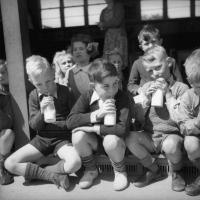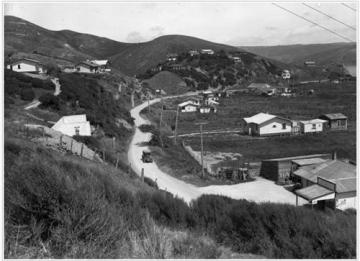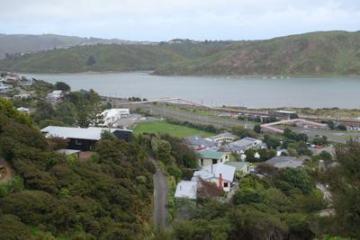History of Paremata School
Discipline
When Paremata School first opened in 1926 the discipline was the strap. The strap was a wide leather belt. If you were very naughty the teacher would bend the strap in half.
Sometimes if you got a sum wrong you had to stay in until you got it right.
The school days seemed to last 24 hours and 7 days a week, because if a teacher heard about something that had happened in the weekend, you would be hauled before the class on Monday morning and given the strap.
One day a teacher was reading a story and anyone that behaved badly would have to stand in front of the class and the teacher would strap them. At the end of the story there were only three people left not standing.
In the olden days they were strapped and they were disciplined for not listening, misbehaving and getting things wrong in spelling and maths. In the 1920s a child could be strapped for not trying, mischief, playing, bad spelling, bad writing and untidy exercise work books.
In 2014 the discipline at Paremata School is very different. If you have three strikes beside your name you are required to fill out a behaviour sheet that outlines the behaviour you demonstrated, why you did it and what you are going to do about it. You need to go through this sheet with your teacher before you are allowed to rejoin the class. At the end of the day this sheet goes home with you so that your parents can read through it before it is signed and returned to school.
Old style discipline is also bad for learning because making mistakes is part of learning and you shouldn’t get hit for it. It is also against the law to hit children now.
In some ways discipline is good and bad. In the olden days (as people say) discipline was good because if children were naughty they knew that they would get their bottom beaten, but it was also bad because some children now get away with bad behaviour. Today parents and teachers cannot hurt children like they used to. It is now illegal to smack or abuse a child.
Milk at schools
Free milk was given to New Zealand schools from 1937. The first Labour Government wanted to improve the health of young kiwis. The farmers had too much leftover milk from the cows so they used that. Free milk was given to schools in New Zealand till 10 February 1967. In its 30 years of existence, kiwi children loved their milk. Although in the days before fridges and chillers, nothing was worse than warm milk. However the winter months played their part too. If it was too cold, the milk would freeze and you would not be able to drink it.
By 1940 the milk was available to 80% of school children. For a few years during World War Two, pupils also received an apple a day. In the 1950's, school milk bottles had cardboard tops with a small hole for the straw.
Polio
Polio was an infectious and contagious disease that affected mainly children. Poliomyelitis attacked the spinal cord and in later forms could attack the brain stems and cause deformities. Polio could also cause paralysis. It attacked children more than adults because children have weaker immune systems and are building these as they grow.
Epidemics occurred from the 1920s to the 1960s. We now have injections that we get when we are babies to prevent it. These epidemics caused Paremata School to close three times, April 1925, December 1936 to March 1937 and December 1947 to March 1948. In 1955 one person died in Paremata from polio.
By Kauri, Jessica M, Bria, Ruby, Thomas, Sebastian, Camryn and Phoebe.
View of part of Paremata, Porirua, looking towards the hills. Houses can be seen below where the photographer is standing, and a car is travelling along the road past the houses. Photograph taken by Sydney Charles Smith during the 1930s.
Paremata showing the school in 2014. The highway is now along the side of the harbour and is four lanes wide.
References
- Primary school boys drinking their school milk, Linwood, Christchurch. Pascoe, John Dobree, 1908-1972 :Photographic albums, prints and negatives. Ref: 1/4-000033-F. Alexander Turnbull Library, Wellington, New Zealand. http://natlib.govt.nz/records/23106268
- View of part of Paremata. Smith, Sydney Charles, 1888-1972 :Photographs of New Zealand. Ref: 1/2-046866-G. Alexander Turnbull Library, Wellington, New Zealand. http://natlib.govt.nz/records/23199974








